The 1913 Barber Dime’s value ranges from $4 in good condition to $75+ uncirculated, depending on mint mark and grade. Philadelphia coins (no mint mark) are most common, while San Francisco “S” mint mark versions are rarer and command higher prices in uncirculated condition. Both versions start around $4 in good condition. No major errors are documented for 1913 dimes. Value is primarily determined by the coin’s condition and mint mark, with uncirculated or Mint State specimens worth significantly more than worn examples. Collectors particularly seek the “S” mint mark for its scarcity.
The 1913 Barber Dime represents a fascinating piece of American numismatic history, minted during the final years of Charles E. Barber’s iconic design run. Whether you’ve inherited a collection or discovered one in an old estate, understanding the value of your 1913 dime requires knowledge of mint marks, grading standards, and market conditions. These silver coins can range from a few dollars to several hundred depending on their origin and preservation state.
Understanding the 1913 Barber Dime Background
The 1913 dime belongs to the Barber series, named after Chief Engraver Charles E. Barber who designed these coins. Production occurred at two facilities that year: Philadelphia and San Francisco. The Philadelphia Mint produced 19,760,000 pieces without any mint mark, while San Francisco struck 510,000 pieces bearing the distinctive “S” mint mark on the reverse below the wreath. This significant difference in mintage numbers directly impacts collector interest and market values today.
The coin measures 17.9 millimeters in diameter and weighs 2.5 grams, composed of 90% silver and 10% copper. The obverse features Liberty wearing a Phrygian cap and laurel wreath, with “UNITED STATES OF AMERICA” encircling the portrait. The reverse displays a wreath of agricultural products surrounding the denomination “ONE DIME.”
Philadelphia Mint (No Mint Mark) Value Breakdown
Philadelphia-minted 1913 dimes carry no mint mark and represent the most commonly available version for collectors. Despite their relatively high mintage, these coins still command premiums above their silver content in better grades.
Grade-Specific Pricing:
| Grade | Approximate Value |
|---|---|
| Good-4 | $4.00 |
| Very Good-8 | $5.50 |
| Fine-12 | $8.00 |
| Very Fine-20 | $18.00 |
| Extremely Fine-40 | $45.00 |
| About Uncirculated-50 | $65.00 |
| Mint State-60 | $75.00 |
| Mint State-63 | $120.00 |
| Mint State-65 | $285.00 |
| Mint State-67 | $1,850.00 |
The jump in value from circulated to uncirculated conditions demonstrates how preservation dramatically affects worth. A 1913 Philadelphia dime in Good-4 condition shows heavy wear with Liberty’s facial features barely visible and the wreath details worn smooth. In contrast, a Mint State-63 example displays sharp details, original luster, and only minor contact marks from the minting process.
According to Heritage Auctions records from 2022-2023, Mint State-65 specimens regularly sell between $275 and $325 at major auctions. The population reports from Professional Coin Grading Service indicate approximately 150 examples certified at MS-65 or higher, making gem-quality pieces genuinely scarce despite the original high mintage.
San Francisco Mint (S Mint Mark) Valuation
The 1913-S Barber Dime presents a more compelling opportunity for collectors due to its substantially lower mintage. With only 510,000 pieces struck compared to Philadelphia’s nearly 20 million, the San Francisco issue commands premium prices across all grade levels.
San Francisco Pricing Structure:
| Grade | Approximate Value |
|---|---|
| Good-4 | $4.50 |
| Very Good-8 | $7.00 |
| Fine-12 | $15.00 |
| Very Fine-20 | $35.00 |
| Extremely Fine-40 | $85.00 |
| About Uncirculated-50 | $175.00 |
| Mint State-60 | $245.00 |
| Mint State-63 | $425.00 |
| Mint State-65 | $1,450.00 |
| Mint State-66 | $4,200.00 |
The “S” mint mark appears on the reverse beneath the wreath, between the bow and the word “DIME.” Identifying this small letter is crucial, as it can mean the difference between a $75 coin and a $245 coin in Mint State-60 condition. A 2023 Stack’s Bowers auction realized $4,680 for a PCGS MS-66 example, demonstrating strong collector demand for premium-quality San Francisco specimens.
Survival rates for the 1913-S in higher grades remain remarkably low. PCGS and NGC combined population reports suggest fewer than 30 examples exist in MS-65 or better condition. This scarcity drives competitive bidding when exceptional pieces reach the marketplace.
Grading Fundamentals for Accurate Assessment
Properly grading your 1913 dime determines whether you hold a $5 piece or a $500 coin. The Sheldon Scale from 1 to 70 provides the industry standard, with specific benchmarks defining each grade level.
Circulated Grades: In Good-4 condition, expect the date and lettering to be readable but Liberty’s portrait heavily worn. Very Good-8 shows slightly better detail definition. Fine-12 displays all major design elements but with significant wear on high points. Very Fine-20 demonstrates moderate wear with most details intact. Extremely Fine-40 exhibits light wear only on the highest points, with clear definition throughout.
Uncirculated Grades: About Uncirculated-50 shows no wear from circulation but may display contact marks or bag marks from storage. Mint State-60 represents a fully uncirculated coin with noticeable marks and possibly dull luster. MS-63 features moderate marks with good eye appeal and original mint luster. MS-65 demonstrates minimal marks visible to the naked eye with strong luster and excellent eye appeal. MS-67 represents a nearly perfect coin with only microscopic imperfections under magnification.
Professional grading services like PCGS and NGC charge $20-$40 per coin for standard service. For a common-date Philadelphia dime worth $75 in MS-60, professional grading may not prove economical. However, a potential MS-65 San Francisco example justifies the expense, as certification significantly enhances marketability and buyer confidence.
Known Errors and Varieties for 1913 Dimes
Unlike some years in the Barber series that feature dramatic doubled dies or repunched mint marks, the 1913 dime remains relatively quiet regarding major error varieties. No widely recognized doubled die obverse or reverse varieties have been documented for either mint. Repunched mint marks occasionally appear on San Francisco examples, but these carry minimal premiums in the current market.
Minor Collectible Variations: Some specialists collect die cracks, die clashes, and lamination errors that occur sporadically across the 1913 production. A pronounced die crack through Liberty’s portrait might add $10-$25 to the base value in circulated grades. Die clashes showing ghosted reverse design elements on the obverse surface generate modest collector interest but rarely command significant premiums.
Off-center strikes represent the most valuable error type for 1913 dimes. A 10% off-center strike with full date visible might bring $150-$300 regardless of mint mark. Examples with 20-30% displacement while retaining complete date visibility can reach $500-$800. However, these errors appear infrequently at auction, with perhaps one or two examples surfacing annually across both major auction houses and online platforms.
Planchet errors including clips, wrong planchet strikes, and broadstrikes theoretically exist but remain essentially unknown in the marketplace for 1913 dimes. The tight quality control at early 20th-century mints prevented most dramatic errors from escaping into circulation.
Market Trends and Selling Strategies
The market for Barber coinage has demonstrated steady appreciation over the past decade, with particular strength in Mint State examples. According to Greysheet CPG pricing data, Mint State-63 1913 Philadelphia dimes increased approximately 45% in value between 2015 and 2024. San Francisco issues in similar grades appreciated roughly 60% during the same period.
Optimal Selling Venues: For common circulated examples worth under $20, local coin shops provide immediate liquidity, though expect offers at 60-75% of retail value. Online marketplaces like eBay reach broader audiences but require careful photography and honest grading. Recent eBay sales data shows Very Fine-20 Philadelphia examples consistently selling between $14-$22, with condition accuracy directly impacting final prices.
For uncirculated or San Francisco mint mark specimens worth $200 or more, major auction houses deliver the strongest results. Heritage Auctions, Stack’s Bowers, and Great Collections specialize in numismatic material and attract serious collectors willing to pay premium prices. Consignment fees typically range from 10-20% depending on the coin’s value, but the exposure justifies the cost for significant pieces.
Timing Considerations: Barber coinage typically performs well at major shows like the American Numismatic Association conventions held each summer. Consigning coins to auctions scheduled around these events often produces stronger bidding. Additionally, year-end auctions in November and December frequently see increased participation from collectors deploying remaining annual budgets.
Third-party grading becomes essential for coins potentially worth $300 or more. A raw 1913-S dime claimed as MS-64 might struggle to reach $300, while the same coin in a PCGS MS-64 holder consistently brings $550-$650. The $35 grading fee represents a worthwhile investment that significantly enhances buyer confidence and marketability.
Authentication and Counterfeit Detection
While 1913 Barber dimes don’t face the same counterfeit pressure as key-date rarities, altered mint marks and cleaned coins present concerns. Some unscrupulous individuals add “S” mint marks to Philadelphia examples, potentially transforming a $75 coin into a $245 piece through fraudulent alteration.
Examine the mint mark under 10x magnification. Genuine “S” mint marks display consistent depth and patina matching the surrounding field. Added mint marks often show disturbance in the metal surface, inconsistent depth, or patina differences. The mint mark should appear naturally integrated into the coin’s surface rather than looking punched or engraved after striking.
Cleaning significantly impacts value by removing original toning and potentially creating hairlines in the coin’s surface. Harsh cleaning can reduce a coin’s value by 50-75% compared to an unmolested example. Natural toning develops gradually over decades, creating even coloration ranging from light gold to deep gray. Artificially toned coins often display unnatural color patterns, particularly around the edges or in recessed areas.
Weight verification provides another authentication tool. Genuine 1913 dimes weigh 2.50 grams with minimal tolerance. A digital scale accurate to 0.01 grams costs under $20 and helps identify wrong-planchet strikes, environmental damage, or potential counterfeits. Coins significantly underweight may have experienced acid damage or silver loss through improper cleaning.
Building a Complete Collection Strategy
The 1913 Barber dimes represent an accessible entry point for assembling a complete date-and-mint-mark set of Barber dimes from 1892-1916. With only two mints producing dimes in 1913, collectors can obtain both varieties without breaking the bank, unlike years featuring Philadelphia, Denver, San Francisco, and New Orleans production.
Budget-Conscious Approach: Assembling both 1913 varieties in Very Fine-20 condition requires approximately $55 total investment based on current market pricing. This grade offers solid eye appeal with all design features clearly visible while remaining affordable for most collectors. At this level, focus on problem-free examples with original surfaces and even wear patterns.
Premium Collection Strategy: Collectors pursuing Mint State examples face significantly higher costs but enjoy coins displaying original luster and sharp striking detail. Acquiring both 1913 varieties in MS-63 condition requires roughly $545 investment. The dramatic visual difference between circulated and uncirculated examples justifies the increased expenditure for many numismatists.
Registry set collecting through PCGS or NGC provides structured competition and community engagement. The PCGS Set Registry features categories for Barber dimes with various completion goals, from basic date sets to advanced varieties including proof issues. Competitive collectors pursuing top rankings in these categories drive sustained demand for premium-quality pieces, supporting strong market prices.
Preservation and Storage Best Practices
Proper storage protects your investment and maintains numismatic value over time. Never clean coins under any circumstances, as even gentle cleaning destroys originality and significantly reduces value. Professional conservators can address specific problems, but routine cleaning by owners almost universally proves destructive.
Store coins in inert holders specifically designed for numismatic preservation. Avoid PVC-containing flips, as polyvinyl chloride breaks down over time and deposits green residue on coin surfaces. Use Mylar flips, paper envelopes, or rigid plastic holders made from inert materials. For valuable specimens, consider NGC or PCGS holders that provide both protection and third-party authentication.
Environmental factors dramatically impact long-term preservation. Maintain stable temperature around 65-70°F with relative humidity between 30-40%. Excessive humidity promotes tarnishing and potential corrosion, while extremely dry conditions can cause holder deterioration. Store coins away from direct sunlight, which can accelerate toning and fade original luster over time.
Handle coins by their edges only, avoiding contact with obverse or reverse surfaces. Skin oils contain acids that etch metal surfaces and create fingerprints visible under magnification. Wear cotton gloves when examining valuable pieces, particularly uncirculated examples where even minor contact marks affect value.
Investment Potential and Long-Term Outlook
Barber coinage demonstrates solid long-term appreciation potential backed by finite populations and growing collector interest. The 1913 issues benefit from late-date status in the series, as many collectors building sets reach these dates last, creating sustained demand. Unlike modern bullion coins with unlimited mintages, the fixed populations of 1913 dimes ensure scarcity remains constant while collector numbers grow.
Silver content provides underlying value support, with each 1913 dime containing approximately 0.07234 troy ounces of silver. At $24 per ounce silver spot price, the intrinsic metal value approaches $1.75. However, even heavily worn examples command numismatic premiums well above melt value, demonstrating collector interest transcends mere silver content.
The strongest appreciation potential exists in Mint State-63 through MS-65 grades, where quality examples remain genuinely scarce but prices haven’t reached stratospheric levels. MS-63 specimens remain attainable for dedicated collectors while offering meaningful scarcity and strong visual appeal. Population reports suggest these grades contain the sweet spot between availability and rarity, positioning them well for continued appreciation as the collector base expands.
You may be interested:
- 1859 Indian Head Penny Coin Value Complete Errors List And No Mint Mark Worth Guide For Collectors
- 1911 V Nickel Coin Value Guide Complete Errors List And No Mint Mark Worth Today
- 1902 Dime Coin Value Complete Errors List With O S And No Mint Mark Worth Guide
- 1788 Quarter Coin Value Complete Guide Errors List And D S P Mint Mark Worth Revealed
- 1776 To 1976 Bicentennial Half Dollar Coin Value Complete Errors List And What Your D S And No Mint Mark Coins Are Actually Worth
- 1990 Penny Coin Value Errors List How D S And No Mint Mark Pennies Are Worth Thousands Of Dollars

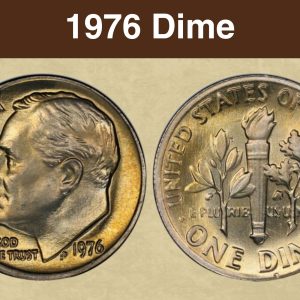
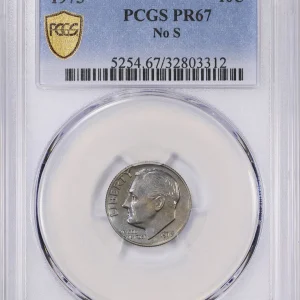
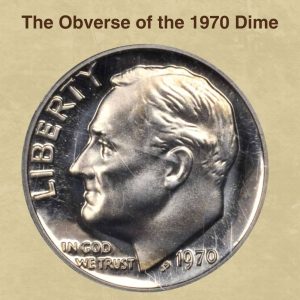
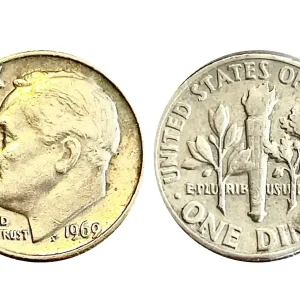
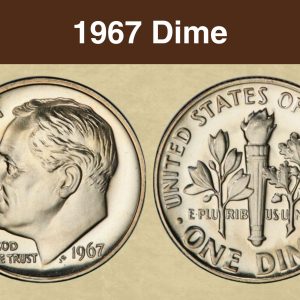
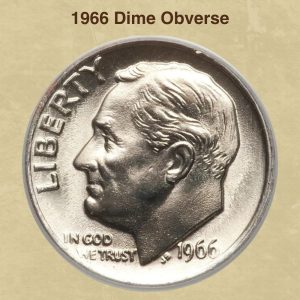
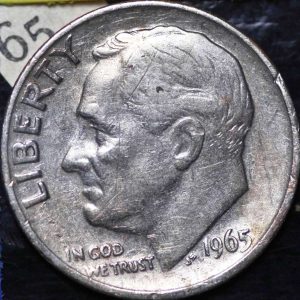
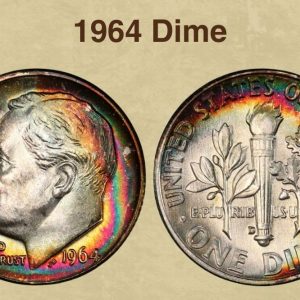
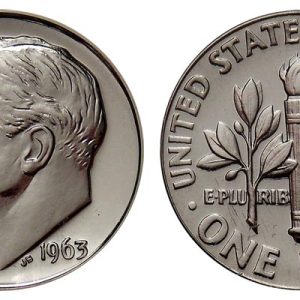
Which dimes with no mint mark are worth money today?
The 1968 no-S dime is a true rarity, and it is an example of one of the most dramatic Mint errors. In 1968, the Mint left the mint mark off the die when it was created in Philadelphia before being shipped to San Francisco to strike that year’s batch of dimes. These no-S dimes are extremely rare and very valuable.